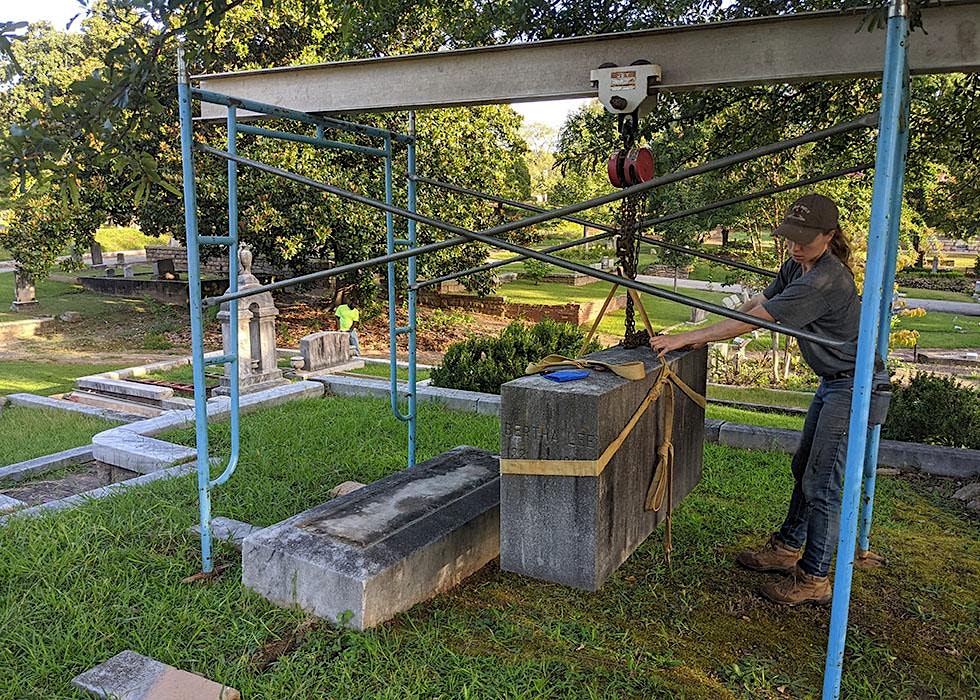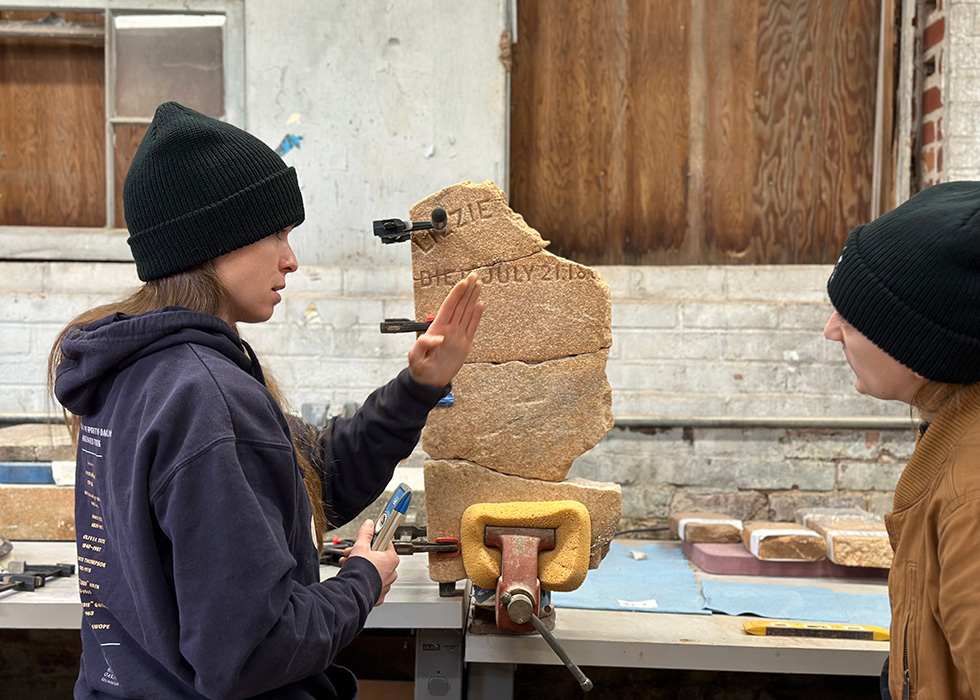
Preserving Cement Grave Markers…and Some Detective Work that Paid Off
Oakland Cemetery is known for its beautiful and elaborate granite and marble monuments. They stand out against the landscape as grand tributes to the dead. But not all headstones at Oakland are made from natural stone. Some are composed of manufactured materials, most notably, cement. Although cement grave markers are found scattered all over Oakland, they are primarily found in the historic African American Burial Grounds. One reason why is that Black funeral homes had a tradition of including small cement headstones that were meant to be temporary as part of their burial packages.

Although they vary slightly, each cement marker includes the deceased’s name and death date as well as the name of the funeral home (for example, Cox Brothers, Hanley, or Haugabrooks). There may have been more of them at one time, but since Oakland currently has only a handful of these special headstones, they are a top preservation priority, and we go to great lengths to ensure their safety and conservation.

A few years ago, one of Historic Oakland Foundation’s gardeners uncovered fragments of two funeral home-issued headstones. One had all of the pieces and was able to be repaired. Despite probing around the entire family plot, we were only able to find the top-most portion of the other. Years passed, and the top piece remained safe in storage. I recently decided to try one last time to find the other fragments: I studied a map and probed the entire lot with no luck. Finally, I decided to remove the other concrete headstone and probe deep beneath it. Lo and behold, I found the missing piece! It was in excellent condition, making repair rather simple.

The headstone had cleanly broken into two pieces. First, I cleaned both pieces with water and a gentle scrub brush and allowed them to dry completely. Next, with clamps and straight levels to hold everything straight and in place, I affixed the pieces together with a two-part epoxy. Once that had set overnight, I filled the remaining voids with two different lime mortars to match the two colors of the base and nameplate on the headstone. Previous acid digestion testing on other cement headstones has shown the presence of lime, so we usually use lime-based mortars for these types of grave markers. To avoid shrinking and cracking, we keep the mortar damp for several days using moistened towels and plastic bags. When it was ready, I re-set the headstone in its appropriate location in the African American Burial Grounds.
Projects like this one are an absolute treat! Cement headstones are my favorite to work with, and I always feel a bit like a detective when I finally uncover missing fragments. Funeral home-issued grave markers are so unique and under-researched, and I love being able to learn a little bit more about them each time I find or repair one.
To see a vast collection of these headstones spanning from the 1930s into the 2000s, I highly recommend a visit to South-View Cemetery.



